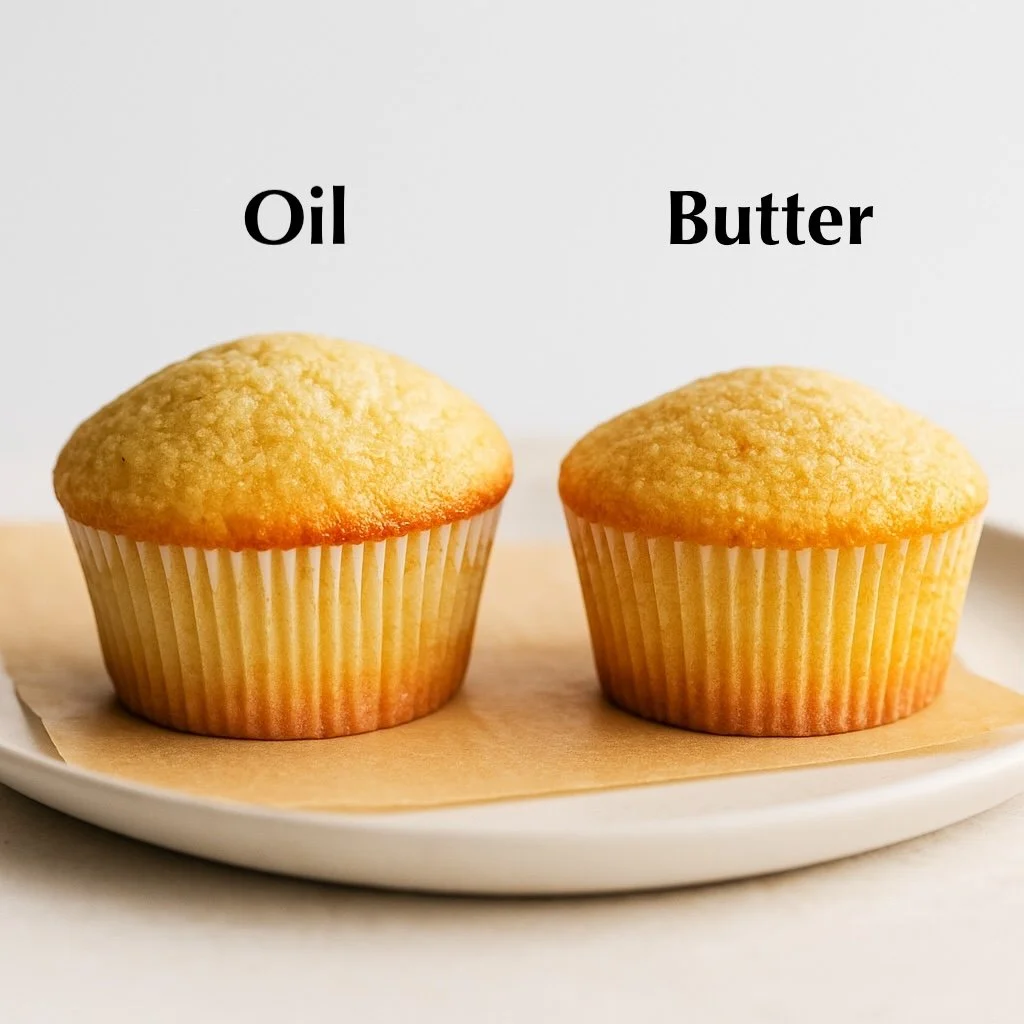What’s the best fat for baking cakes? butter, ghee, or olive oil compared
When it comes to baking, the fat you use in your cake recipe is not just a supporting role, it’s the leading actor. At Kuisit, we believe every ingredient should nourish your body and bring joy to your plate. That’s why we bake with Extra Virgin Olive Oil (EVOO).
But we also honor the role of butter and ghee in baking traditions. Here’s the deep dive on each, their health impact, flavor, texture, and how to substitute them properly.
💛 Butter in baking: Tradition, texture & lift
Butter has been the gold standard in baking for centuries. It delivers rich flavor, aids in structure (especially when creamed with sugar), and defines many classic cake textures.
✔ Benefits of butter:
Contributes to a light, structured crumb.
Offers a creamy, nostalgic flavor ideal for traditional cakes, cookies, and pound cakes.
When creamed, it traps air, creating volume and lift.
⚠️ Things to consider:
Butter contains water (about 20%), which can affect moisture retention.
Cakes dry out faster unless enriched with syrups, fruits, or dairy.
Not suitable for lactose-free diets, unless using clarified alternatives.
🌾 Ghee: The lactose-free butter
Ghee is butter, clarified. That means it’s had the water and milk solids removed, leaving pure golden fat. This makes it ideal for dairy-sensitive diets, and its nutty, roasted flavor adds character to baked goods.
✔ Benefits of ghee:
Lactose-free and shelf-stable.
Rich, toasted flavor, perfect for honey, spice, or nut-based cakes.
High smoke point and good moisture retention.
🍰 Best uses: Semolina cakes, Indian sweets, financiers, basbousa, spice cakes.
🌿 EVOO: The Kuisit star ingredient
At Kuisit, we choose Extra Virgin Olive Oil because it’s as nourishing as it is delicious. It’s loaded with antioxidants, heart-healthy fats, and anti-inflammatory compounds.
✔ Why we use EVOO:
100% plant-based, unrefined, and rich in polyphenols.
Keeps cakes incredibly moist and tender for days.
Mild EVOO brings subtle fruitiness that complements chocolate, citrus, vanilla, and nuts.
🎯 Healthier than neutral oils (like canola or sunflower), which are often chemically extracted and stripped of nutrients.
🔥 Why we bake at 150°C (302°F)
We always bake cakes with EVOO at 150°C, and for good reason:
Preserves EVOO's nutrients: Higher temps destroy antioxidants and healthy fats.
Flatter cakes: Lower heat means slower rise, which prevents doming and gives cakes even surfaces, perfect for layering.
Locks in moisture: A slower bake seals in hydration for a plush, soft crumb.
🎂 EVOO at 150°C = healthier, prettier, longer-lasting cakes.
🍰 How each fat affects cake texture
FatTexture OutcomeFlavor ProfileBest UsesButterLight, structured crumbRich, creamy, nostalgicPound cakes, shortbreads, creamed cakesGheeDense, smooth, aromaticNutty, toasted butterSemolina cakes, spice cakes, dairy-free bakesEVOOMoist, tender, plushDelicate, neutral to fruitySponges, loaf cakes, muffins, citrus bakes
🔁 Converting butter to EVOO in recipes
Switching from butter to EVOO is simple:
Use 80% of the butter weight in EVOO
Because butter is 80% fat and 20% water, you need less EVOO to achieve the same richness.
🧮 Example conversions:
100g butter → 80g EVOO
1 cup butter (227g) → 180g EVOO (about ¾ cup)
When converting:
Skip the creaming method. Use leavening agents like baking powder/soda.
Beat eggs well to incorporate air.
Expect moister, softer cakes with a longer shelf life.
❌ Why we never use “Neutral oils”
Oils like canola, sunflower, and soybean are:
Highly refined, often chemically extracted.
Nutrient-poor, stripped of antioxidants and flavor.
High in omega-6 fats, which can promote inflammation.
At Kuisit, we believe your fat should be flavorful, functional, and nourishing. EVOO is the only one that checks every box.
🌿 Kuisit Tip
Use butter for classic flavor and airy crumb.
Use ghee for a richer, denser, lactose-free option.
Use EVOO for moisture, health, and tenderness, and bake at 150°C to protect its power.

